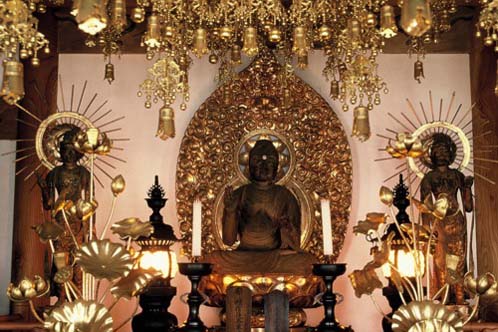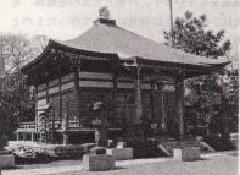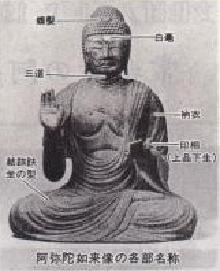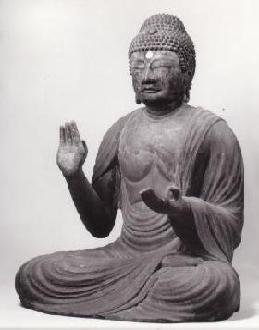Statues of Amida Tathagata and his flanking samurai at Jorakuji Temple
Update date: June 27, 2017

Amida triad statue at Jorakuji Temple
Located in Higashinaganuma Tendai sect of Ancient temple Jorakuji Temple is a cultural property designated by the Tokyo Metropolitan Government. Amida Triad is enshrined here. Temple Gate Enter and it is on your right Amida Hall Inside the (main hall) Kannon Bodhisattva Statue at Koshoji Temple It is also known as the oldest Buddha statue in the city.
The three Buddha statues are all Cypress wood of Parquet construction So the image height is Central statue of Amitabha Buddha 78.4 cm, Right-hand attendant Kannon Bodhisattva standing statue 92.7 cm, Standing statue of Bodhisattva Seishi, the left attendant It's 92.3 centimeters.
The Seated Statue of Amida Buddha With the right foot up Sitting in full lotus position (Cross your legs and sit with the tops of your feet on the thighs of the opposite sides) palm The first and second fingers of the left hand are bent with the palm facing up, and the left hand is also bent with the palm facing up. Spiral hair ( Tathagata statue Attached to the head of granular of Curly hair )teeth Cutting So, the eyes Carved Eyes It is attached with. Clothing It is placed over the right shoulder, abdomen, and thighs and legs. Lacquer leaf ( lacquer After applying Gold Leaf The chest area is covered with a base. Lacquer leaf of Flaking is noticeable.
The structure is head and body Ichiki Carved from Three Ways Under (the three grooves in the neck) Cut head (inserting a chisel under the neck to separate the head and body) Hollowed out (The inside of the statue) Hollow The area behind the ears on the head, Back of body Different materials are used to join together at the shoulder, elbow, and wrist of the right arm, and the cuff and wrist of the left arm.
Downcast The gentle expression of Fujiwara period You can see the characteristics of Spiral hair The grains are a little large, Clothing line It has a relatively dense texture and retains the old style in that it has alternating large and small folds carved into it. It is thought to have been produced in a local area in the first half of the 12th century.
Amitabha Buddha statue placed to the left and right of Both sides teeth, Kannon Bodhisattva Statue and Statue of Bodhisattva Seishi So, together Standing statue is. Right Attendant of Kannon Bodhisattva Statue Standing upright on the pedestal, right hand palm forward Drooping And the left hand is bent Lotus flower The head is Topknot (Topknot) and eyes Carved Eyes It is made with. Textile (Cloth worn from the shoulders to the sides) Heavenly clothes The person is wearing a kimono, a skirt from the waist down, and a loincloth. Lacquer leaf It is given.
The structure is behind the ears heel Follow the line that connects the back of the Hollowed out I am currently working on it.
Left Attendant of Statue of Bodhisattva Seishi It has almost the same shape and structure as a Kannon statue, except that it stands with its right arm bent and its left arm hanging down. Heavenly clothes of Free part The feet on both statues are thought to have been made at a later date.
Both sides Both techniques and facial expressions, especially the lower eyelids It has in common with the Chuson in areas such as the unclear lines of the One It is believed to have been made by
The investigation revealed that the statue had been placed inside Repaired wood tag One of the five has a " Accepted October 3rd year, Buddhist sculptor "Yamaguchi Shohei" Inscription in ink It has been confirmed that in the early Edo period Accepted It is known that repairs were carried out in 1654.
All three figures are slightly lacking in beauty of form, but the shape, body, Clothing These are well-formed and technically excellent Buddhist statues made locally.

Amida-do Hall (main hall) of Joraku-ji Temple

Name of each part of Buddha statue

Seated Amida Nyorai











